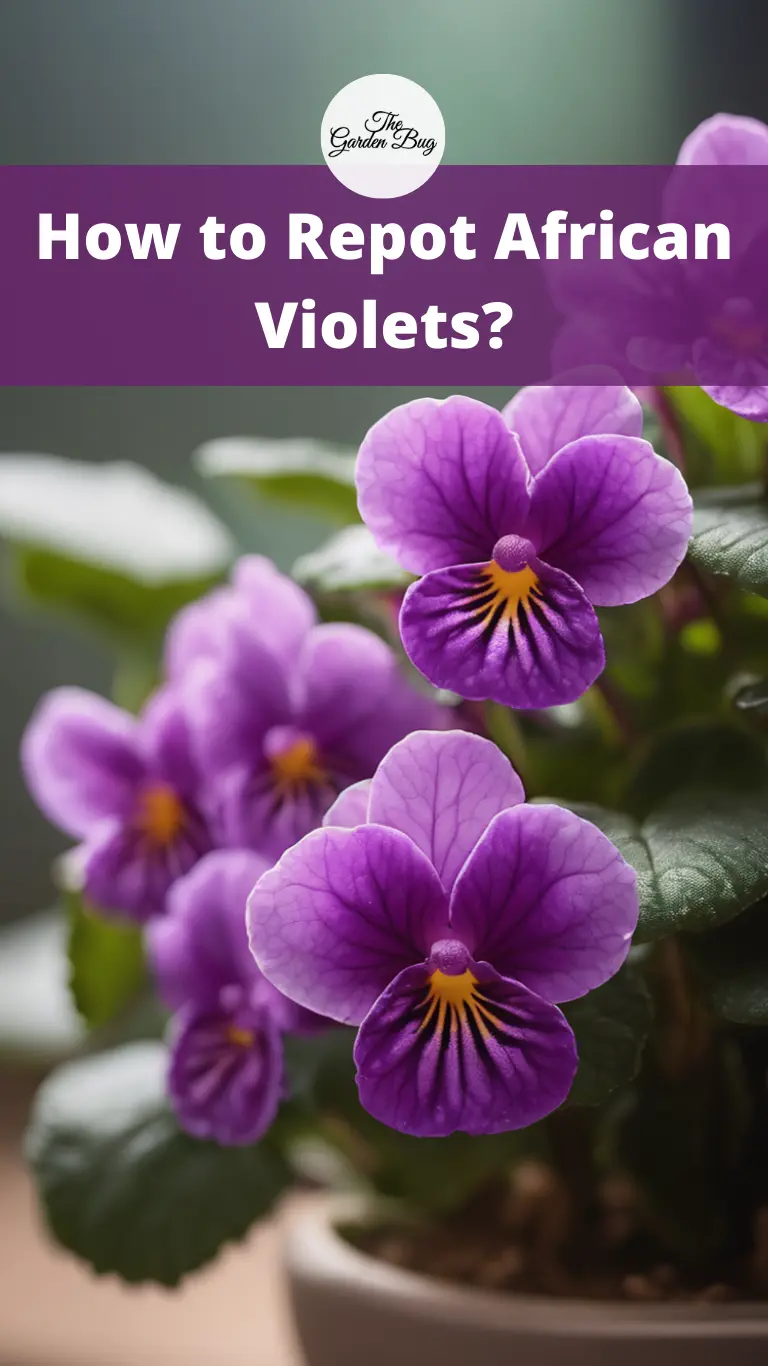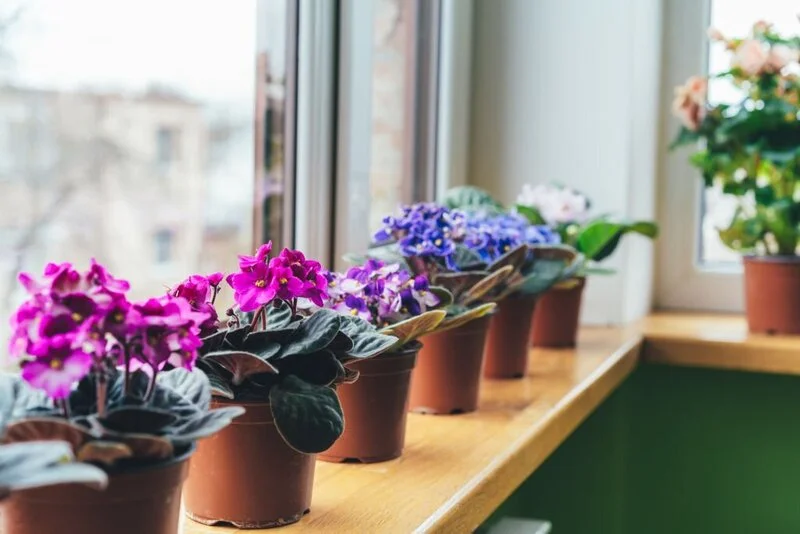Hey there, green thumbs! Today, let’s dive into the delicate world of African Violets. These lovely little houseplants, with their soft, velvety leaves and stunning array of blossoms, can be the star of any indoor garden. But, as with all things in life, they might need a little help from us every now and then – like when it’s time for them to move into a new home, aka a new pot!
- INNOVATIVE DESIGN: This self watering pots for indoor plants is a Perfect solution for anyone looking to care for their African violets live plants with minimal effort. These Self Watering Planters and Pots feature a built-in water reservoir that slowly releases water into the soil as needed, eliminating the need for frequent watering.
- DECORATIVE PLANT POTS: Our Self watering planter is stylish and efficient way to care for your African violets. They are also suitable for a variety of other plants, including herbs, aloe vera, cactus, succulents, small flowers. Perfect addition for indoor plant pots, home decor, kitchen and houseplant.
- HIGH QUALITY CERAMIC: This self watering pot is made of premium quality ceramic, which is sturdy, durable, and resistant to cracking or chipping. They have a sleek and modern design, with a glossy finish that adds a touch of elegance to any room, plant pot, flower pots for indoor plants, african violet pot.
- EASY TO USE: Our african violet pots self watering ceramic are low maintenance. Simply fill the reservoir with water and let the large self watering planters do the rest. The built-in water reservoir helps to ensure that your flower receive the proper amount of water, promoting healthy growth.
- GREAT GIFT IDEA: This planters for indoor plants makes a loving gift for birthday, Mother’s Day, Christmas, wedding, valentine day and house warming. Many people are stocking these self watering pots around their home or business. The stylish looks great quality and superior features.
African Violets and Their Repotting Needs
African Violets, scientifically known as Saintpaulia, are easy-going plants. They’re not too fussy about where they live, as long as they have the right amount of light and moisture. However, even these laid-back beauties can outgrow their pots. And when they do, they need a little bit of help from their human friends. That’s when repotting becomes essential.
Signs Your African Violet Needs to Be Repotted
Just like a hermit crab outgrows its shell, your African Violet may have outgrown its pot. But how can you tell? Your plant will give you some clues. Maybe its roots are peeking out of the drainage holes, or perhaps the plant looks top-heavy compared to its pot. Or it might be that your violet isn’t blooming as much as it used to. If you’re noticing any of these signs, it’s time for some repotting action!
Preparing to Repot: Gathering Materials and Choosing the Right Pot
First things first, we need to get everything ready. It’s like preparing for a grand adventure but in the comfort of your home, with your African Violet as your trusted companion. To start this journey, you’ll need a new pot (slightly bigger than the old one), fresh potting mix, a small knife or pruning shears, and maybe a calming playlist to make the process more enjoyable. Choosing the right pot is crucial here, and by ‘right’, I mean a pot that’s about a third of the width of your plant and has good drainage.
- Blended for the specific needs of African Violets
- Feeds up to 6 months
- Grows big blossoms with brilliant color
- Use when potting or repotting indoor or outdoor container plants
- Use with Miracle-Gro Blooming Houseplant Food
Step-by-Step Guide to Repotting African Violets
Alright, now that we’re all set let’s get down to business. Don’t worry, it’s not as scary as it might seem! Here’s a simple step-by-step guide to help you through.
- Gently remove the African Violet from its current pot. Be careful not to damage the roots.
- Check the roots for any signs of disease or damage. Trim off any unhealthy-looking roots.
- Fill the new pot about one-third of the way with fresh potting mix.
- Place the plant in the new pot, spreading its roots out over the soil.
- Add more potting mix to the pot, but be careful not to bury the plant’s crown (where the stem and roots meet).
- Water the repotted plant gently.
- Give yourself a high five! You’ve just successfully repotted an African Violet.
Just remember, repotting can be a bit of a shock to your plant, so it might need a little extra TLC afterwards. Keep an eye on it for the next few days to ensure it’s settling into its new home nicely.
Aftercare for Repotted African Violets
Once you’ve finished repotting, your African Violet might feel a bit like it’s got jet lag – it’s in a new place and everything feels different. That’s why aftercare is so important. Keep your repotted plant in a warm spot with indirect light, water it carefully, and try not to move it around too much. It’s like your plant is on a vacation, let it rest and acclimate.
- For African Violets and other blooming plants
- Promotes beautiful blooms
- Just 7 drops of water every time you water
- 8-14-9 Formula
- Famous 7 Drops formula – Just 7 drops per quart of water for beautiful plants
Addressing Common Repotting Problems
Sometimes, even with our best efforts, things can go a little sideways. Maybe your African Violet isn’t looking as perky as you’d hoped, or you notice some drooping leaves. Don’t panic! These are common problems and they can be sorted out. It’s usually a sign that the plant is adjusting to its new environment. However, if you notice any severe wilting or discoloration, it may indicate root damage during the repotting. In such cases, it might be worth it to take the plant out and check its roots.
Conclusion
And there you have it – everything you need to know about repotting African Violets, from gathering your materials to aftercare. Remember, plants, like people, need time to adjust to new surroundings. So, be patient with your African Violet after repotting and give it the care it needs. And above all, enjoy the process! After all, gardening is not just about the result but the joy you get from the journey.








